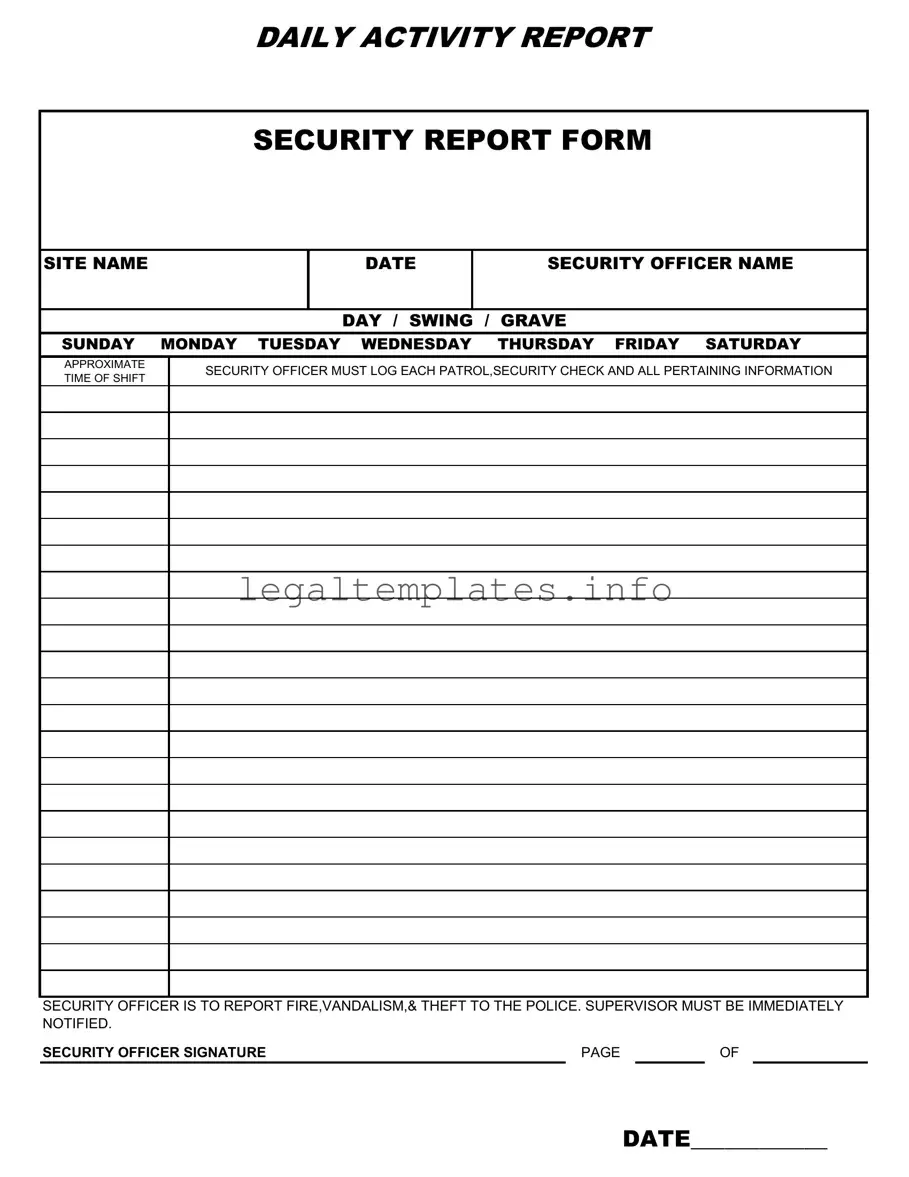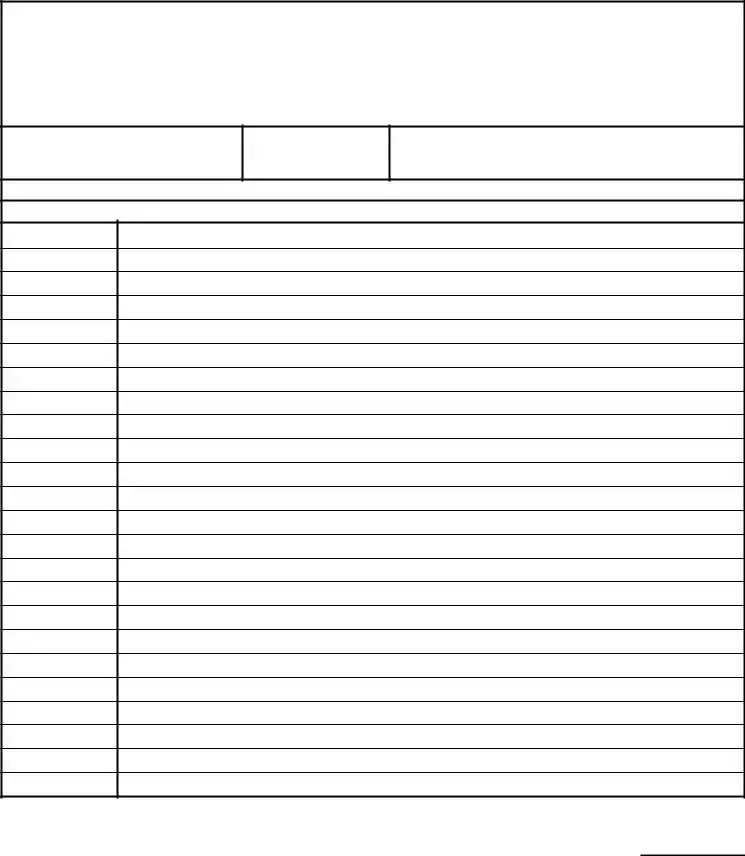The Security Guard Incident Report form closely resembles the Security Guard Daily Report Sample form, as both are essential for documenting events that occur during a security officer's shift. An Incident Report, however, focuses specifically on unusual or unexpected events that require immediate attention, such as security breaches, thefts, or safety hazards, detailing the time, location, and nature of the incident, along with the response taken. This emphasis on specific incidents differentiates it but maintains the core principle of logging important occurrences for record-keeping and action.
A Maintenance Request form shares similarities with the Security Guard Daily Report Sample form because both involve the reporting of observations that may require follow-up action. In a Maintenance Request form, employees or residents note issues related to the upkeep or repair of facilities, equipment, or infrastructure, which is akin to how security officers document situations needing managerial or supervisory attention. While focusing on maintenance rather than security, the underlying objective of ensuring a safe and functional environment connects them.
Police Daily Activity Logs also share a common purpose with the Security Guard Daily Report Sample form, as both document daily activities, incidents, and observations. Police logs, however, are broader in scope, covering not only security-related incidents but also community interactions, traffic stops, and law enforcement responses across different areas. Despite these differences, the core function of maintaining a historical record of activities and incidents for accountability and transparency is a shared goal.
Visitor Log forms are somewhat similar to the Security Guard Daily Report Sample form in their function of documenting entries and exits, though in a more specific context. Visitor Logs are used to record the details of individuals entering a building or facility, including their name, time of visit, and purpose. While focused on visitors, the objective of managing and reviewing access parallels the security officer's task of logging patrol checks and security concerns.
Employee Time Sheets, while primarily concerned with tracking hours worked for payroll purposes, also share an element of logging activities similar to the Security Guard Daily Report Sample form. Both documents record time-based entries, with time sheets detailing when employees start and end their work shifts, and may include breaks or overtime. This tracking of time underlies both documents, though for distinct purposes: operational and payroll efficiency in the case of time sheets, and security monitoring in the daily report form.
An Incident Response Plan document, often used in emergency preparedness, shares a preventive and reactive strategy similar to aspects of the Security Guard Daily Report Sample form. This document outlines procedures for responding to potential incidents, including who to contact and steps to mitigate damage. The connection lies in the emphasis on preparedness and structured response to incidents, highlighting the importance of documentation and procedure in ensuring safety and security.
The Facility Inspection Checklist is similar to the Security Guard Daily Report Sample form in that it involves a systematic check of conditions and potential issues. However, it is specifically structured around the inspection of physical facilities to ensure compliance with safety and operational standards. Like the security report form, it serves to identify and document potential problems that need addressing to maintain safety and efficiency, aligning both documents on the objective of preventative maintenance.
Activity Summary Reports, used in various contexts including project management and team performance tracking, bear resemblance to the Security Guard Daily Report Sample form through their focus on documenting daily activities, achievements, and observations. Though their scope might be broader or more specific depending on their context, the principle of logging daily entries to monitor progress and identify areas for improvement links them with the purpose of the security guard's report.
Risk Assessment Forms, which identify and evaluate potential risks to employees, assets, or operations, also relate to the Security Guard Daily Report Sample form through their role in safety and security. By systematically identifying potential hazards and assessing their likelihood and impact, these forms contribute to the development of mitigation strategies, analogous to how security reports document and help manage risks encountered during patrols.
Finally, a Shift Handover Report, used by employees to communicate key information between shifts, parallels the Security Guard Daily Report Sample form in its purpose of ensuring continuity and situational awareness. Although focused on a broader range of information, the essence of documenting critical incidents, outstanding issues, and special instructions ensures a seamless transition between shifts, aligning with the security report's role in maintaining a continuous security posture.

